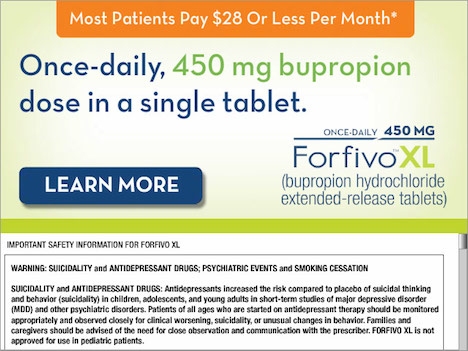
 |
|
 |
|
|
Advertisement 
Advertisement 
|
September 3, 2014
Prescriptions for Novel Anticoagulants Increase
Boston—From 2010 to 2013, novel oral anticoagulants (NOACs) represented 62% of new prescriptions for atrial fibrillation but 90% of anticoagulant-related healthcare dollars, according to a new study.
Rapidly—But at a Cost The study, published recently in The American Journal of Medicine, documents the rapid adoption of NOACs into clinical practice, often in place of warfarin, the long-time standard treatment for atrial fibrillation. Warfarin has the advantage of being relatively inexpensive, but it is often not well tolerated because of necessary routine monitoring, dietary restrictions, and increased bleeding risks, especially in older patients, according to study authors led by researchers from Harvard Medical School and Brigham and Women’s Hospital in Boston. The NOACs approved by the FDA, including dabigatran (Pradaxa), rivaroxaban (Xarelto), and apixaban (Eliquis), require no monitoring yet perform as well or better than warfarin in randomized trials, they point out. “Given the much simpler clinical protocol associated with a NOAC, it is not surprising that the NOACs accounted for 62% of new anticoagulant prescriptions during that time period. Ease of use undoubtedly accounted for this rapid switch from warfarin to a NOAC,” Joseph S. Alpert, MD, of the University of Arizona College of Medicine, Tucson, notes in a related commentary. For the study on prescription trends, the researchers analyzed medical and prescription claims data from a large American medical insurance company to identify patients with AF who were prescribed an oral anticoagulant from 2010 to 2013. While adoption of NOACs has been rapid overall, that is especially the case in patients with lower CHADS2 (Congestive heart failure, Hypertension, Age >75 years, Diabetes mellitus, Stroke) scores and HAS-BLED (Hypertension, Abnormal renal/liver function, Stroke, Bleeding history or predisposition, Labile international normalized ratio, Elderly [Age >65 years], Drugs/alcohol concomitantly) scores, according to the results. Those with higher scores in both measures were more likely to still be on warfarin. Study authors called that finding especially significant because, in the clinical trials conducted to approve NOACs, most patients had CHADS2 scores in the higher ranges. “The greatest absolute benefit from novel anticoagulants has been shown in clinical trials to be among patients at highest baseline risk for stroke or systemic embolization, which is at odds with our observation of selection of seemingly lower-risk patients for these drugs,” said lead author Niteesh K. Choudhry, MD, PhD. “Such a finding may reflect provider conservatism for new drug adoption, particularly given longitudinal experience with warfarin.” The new drugs also were less likely to be prescribed to women and to patients in lower income areas. The authors also point out the financial effect of the newer anticoagulants compared to warfarin, reporting that, over the first 6 months, the average combined patient and insurer cost associated with starting a NOAC was $900 greater than the costs of starting warfarin. “The observed patterns of anticoagulant initiation among patients with atrial fibrillation additionally have important economic implications for patients, payers, and the health care system,” Choudhry added. “Average patient out-of-pocket and insurance spending was more than five-fold and 15-fold higher, respectively, for novel anticoagulants as compared with warfarin. A six-month difference in total costs of $900 in our cohort translates into billions of dollars at a national level.” The authors suggest that the study provides “important directions for future comparative and cost-effectiveness research.” “These findings point to the need to conduct ongoing surveillance of the adoption of new agents into clinical practice, as well as the need for robust, real-world comparative-effectiveness analyses of these medications, to enable patients and providers to make informed decisions about their relative benefit, safety, and cost-effectiveness,” Choudhry suggested. Alpert proposed, however, that, while the use of NOACs will increase over time, cost will become less of an issue with the introduction of generic formulations and with new protocols to eliminate bleeding risk. |
U.S. Pharmacist Social Connect

 |
|

